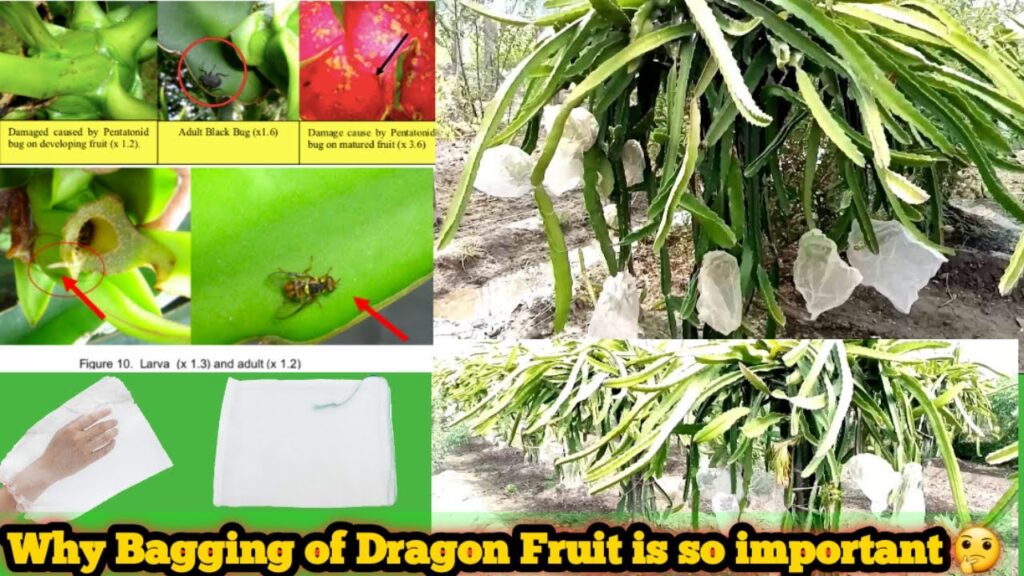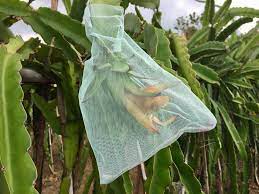A novel approach has emerged to safeguard dragon fruit orchards from pest invasions: the ingenious implementation of parasitic wraps for pest control in dragon fruit. This cutting-edge technique not only showcases the potential for eco-friendly solutions but also underscores the intricate dance between science and nature in modern farming practices.
Table of Contents

Unraveling the Concept of Parasitic Wraps
Defying Convention: A Wrap Around Pest Management
Traditionally, pest control in dragon fruit cultivation often involved the application of chemical pesticides or the introduction of predatory insects. However, the paradigm has shifted with the introduction of parasitic wraps, a concept rooted in the utilization of nature’s own mechanisms for pest deterrence.
The Wrap Architecture
The foundation of this innovative approach lies in the construction of specialized wraps that encapsulate the dragon fruit plants. Crafted from biodegradable materials, these wraps serve as a physical barrier against pests while simultaneously hosting beneficial parasitic organisms.
The Enigmatic Allies: Parasites in Action
Nematodes
At the heart of parasitic wraps for pest control in dragon fruit are microscopic warriors known as nematodes. These thread-like organisms, belonging to the phylum Nematoda, infiltrate the soil surrounding the dragon fruit plants. Their mission: to seek out and eliminate the larvae of soil-dwelling pests.
Symbiosis
The symbiotic relationship between dragon fruit plants and nematodes unfolds as a delicate dance. The wraps not only shield the plants from external threats but also provide a conducive environment for nematodes to thrive. In return, these benevolent intruders target pests such as root-feeding larvae, offering a sustainable and targeted pest control solution.
Crafting the Perfect Wraps for pest control
Biodegradable Marvels
In the pursuit of eco-friendly agricultural practices, the wraps themselves become a testament to innovation. Crafted from biodegradable materials, they seamlessly integrate with the environment, leaving no ecological footprint. The choice of materials ensures that the wraps break down naturally over time, further emphasizing the sustainability of this approach.
Pheromone lures
To enhance the efficacy of parasitic wraps for pest control in dragon fruit, some formulations incorporate pheromone lures. These chemical signals mimic the natural scents emitted by pests, attracting them towards the wraps. Once entangled, the pests become susceptible to the vigilant nematodes, perpetuating a cycle of natural and targeted pest control.
The Dynamics of Application

Wrap it Right: Installation Process
Implementing parasitic wraps as part of a dragon fruit pest management strategy involves a meticulous installation process. Farmers, armed with knowledge about the lifecycle of target pests, strategically deploy the wraps at specific growth stages. This precision ensures optimal protection and maximizes the impact of the nematode allies.
Monitoring and Adjustments
Effective pest control is a dynamic process, and parasitic wraps demand ongoing monitoring. Regular checks for wrap integrity, nematode activity, and pest infestations are imperative. Adjustments to the deployment strategy may be necessary based on environmental factors, ensuring a responsive and adaptive approach to pest management.
The Advantages of Parasitic Wraps

Targeted Precision
Unlike broad-spectrum pesticides that indiscriminately affect various organisms, parasitic wraps offer a targeted and species-specific approach. By honing in on the pests’ vulnerabilities during specific life stages, nematodes contribute to the preservation of dragon fruit plants without harming beneficial insects or the surrounding ecosystem.
Reduced Chemical Dependency
The adoption of parasitic wraps for pest control in dragon fruit represents a paradigm shift towards reducing chemical dependency in agriculture. By leveraging the natural predatory instincts of nematodes, farmers can curtail the need for conventional pesticides, mitigating potential environmental risks and safeguarding the overall health of the orchard.
Challenges on the Horizon
Environmental Variables
Although the idea of parasitic wraps is promising, environmental factors can affect its effectiveness. Factors such as soil composition, moisture levels, and temperature fluctuations may impact the activity and reproduction of nematodes. Adapting the strategy to suit the unique conditions of each dragon fruit orchard becomes crucial for success.
Cost Considerations
The implementation of innovative agricultural practices often comes with associated costs. Farmers contemplating the adoption of parasitic wraps for pest control in dragon fruit must weigh the initial investment against the long-term benefits. As technology advances and mass production becomes more streamlined, the economic feasibility of this approach may improve.
A Glimpse into the Future
As we delve into the realm of parasitic wraps for pest control in dragon fruit, a future where agriculture harmonises with nature comes into focus. The wraps, with their microscopic allies, represent a shift towards sustainable and environmentally conscious farming practices.
In this evolving narrative, farmers stand as stewards of change, embracing innovative solutions that balance productivity with ecological responsibility. As parasitic wraps become integral to the modern agricultural lexicon, the dragon fruit orchards of tomorrow may very well embody a harmonious coexistence between technology, nature, and the bountiful yields they yield.
